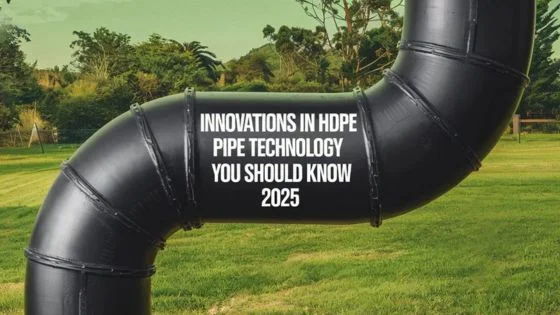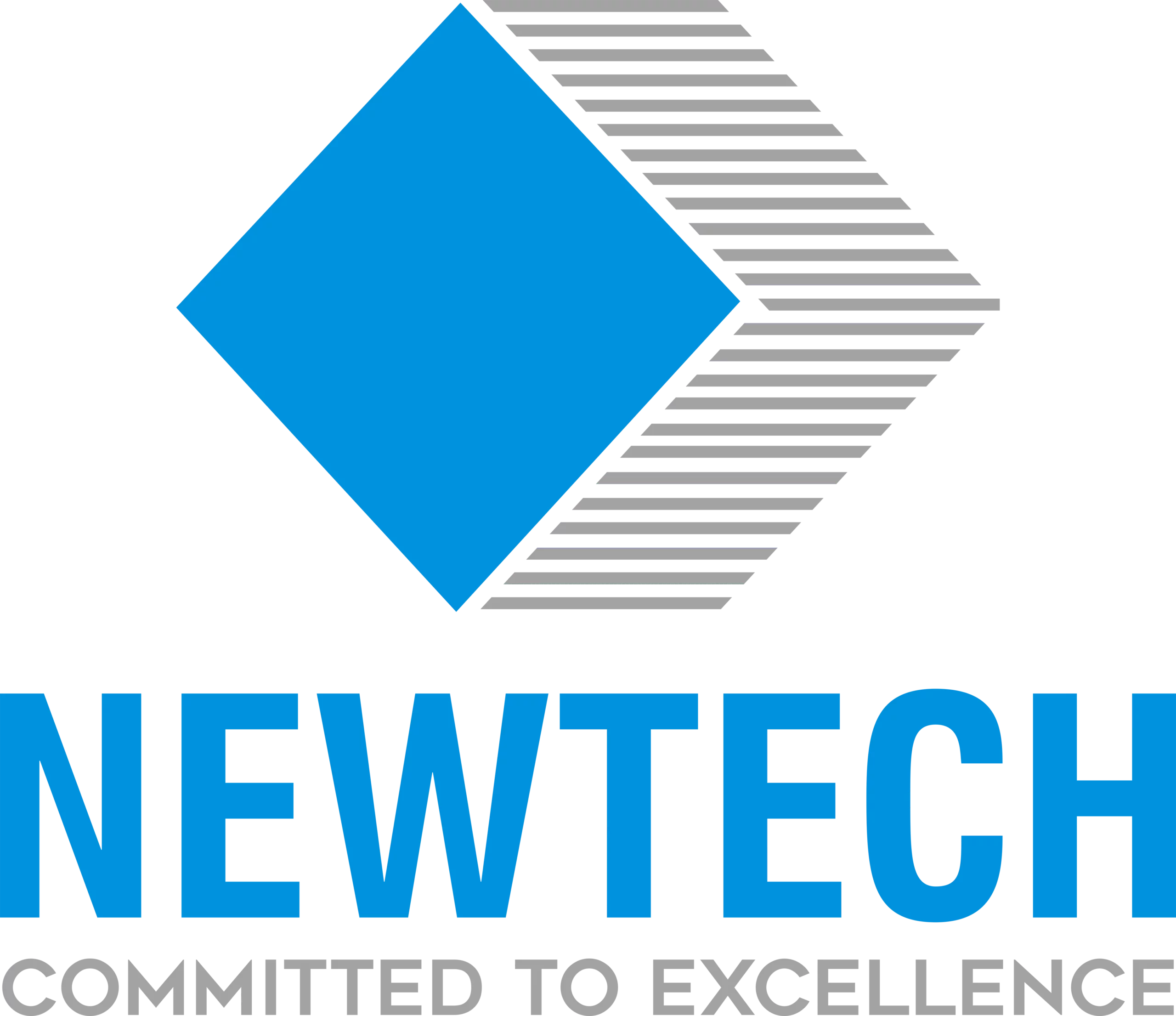Introduction: The Growing Importance of HDPE in Infrastructure
High-Density Polyethylene (HDPE) pipes have become essential components in modern infrastructure projects worldwide. Their unmatched durability, flexibility, and resistance to corrosion have made them a preferred choice for various applications, from water supply to gas distribution. As we approach 2025, the innovations in HDPE pipe technology are setting new standards, ensuring more efficient and sustainable solutions. This blog explores the history, advancements, and future prospects of HDPE pipe technology, highlighting key innovations and their potential impact on infrastructure.
Brief History and Evolution of HDPE Pipes
HDPE was first introduced in the 1950s and quickly gained popularity due to its lightweight yet robust nature. Over the decades, HDPE pipes have evolved, incorporating advanced manufacturing techniques and materials to enhance performance. Initially used for basic water distribution, HDPE pipes are now employed in complex applications such as underground utilities, marine outfalls, and even mining operations. The continuous research and development in HDPE innovations have resulted in pipes that can withstand extreme conditions while offering superior longevity compared to traditional materials.
Importance of Modern HDPE Innovations as We Approach 2025
As global infrastructure demands grow, the need for reliable and sustainable piping solutions becomes more critical. Modern HDPE innovations are addressing these challenges by improving pipe strength, flexibility, and environmental impact. With advancements in pipe technology, HDPE systems are now capable of supporting smart infrastructure projects that incorporate IoT devices for real-time monitoring and maintenance. As we step into 2025, these innovations will play a pivotal role in shaping modern piping systems, ensuring they meet the demands of future cities and industries.
HDPE Pipe Technology: A Revolution in Modern Piping Systems
Overview of HDPE’s Unique Properties
HDPE pipes stand out due to their unique combination of properties:
Durability: They can withstand high pressure and resist environmental stress, making them ideal for long-term installations.
Flexibility: Unlike rigid materials like concrete, HDPE pipes can bend without breaking, reducing the need for joints and fittings.
Corrosion Resistance: HDPE does not rust or corrode, which is a significant advantage over metal pipes.
These properties contribute to lower maintenance costs and a longer service life, positioning HDPE as a superior option for modern piping systems.
Key Advancements in Manufacturing and Installation
Recent advancements in HDPE manufacturing have focused on enhancing pipe strength and reducing production costs. Innovations such as multilayer extrusion and advanced welding techniques have improved joint integrity, minimizing leakage risks. Additionally, trenchless installation methods, like horizontal directional drilling (HDD), have revolutionized HDPE pipe developments, reducing environmental disruption and project timelines.
These advancements reflect the continuous evolution of HDPE solutions, ensuring they remain at the forefront of modern infrastructure projects.
Sustainability and Environmental Impact
Eco-Friendly HDPE Manufacturing Processes
Sustainability is a key driver in today’s construction industry, and HDPE pipes offer significant environmental benefits. The manufacturing process consumes less energy compared to traditional materials, and HDPE is fully recyclable. Many manufacturers are adopting green practices, such as using recycled HDPE to produce new pipes, further reducing the environmental footprint.
Benefits Over Traditional Materials (PVC, Concrete)
Compared to PVC and concrete, HDPE pipes offer several ecological and operational advantages:
Lower Carbon Footprint: HDPE production emits fewer greenhouse gases.
Reduced Maintenance: The corrosion-resistant nature of HDPE pipes means fewer replacements and repairs, leading to less waste.
Lightweight: Easier transportation reduces fuel consumption during delivery.
Case Studies Demonstrating Environmental Benefits
Several projects worldwide have demonstrated the environmental benefits of HDPE pipes. For instance, a large-scale water distribution project in Europe replaced aging metal pipes with HDPE, reducing water leakage by 40% and cutting maintenance costs significantly. Similarly, in North America, HDPE pipes were used in a coastal project where their flexibility and corrosion resistance proved essential in withstanding harsh marine conditions.
Device Integration with HDPE Systems
IoT and Smart Sensors for Leak Detection and Flow Monitoring
One of the most exciting developments in HDPE pipe technology is the integration of smart devices. IoT-enabled sensors can now be embedded within HDPE systems to monitor flow rates, detect leaks, and provide real-time data. These devices help utilities manage resources more efficiently, preventing costly downtime and reducing water loss.
Future Prospects for Connected Piping Infrastructure
The future of HDPE lies in connected infrastructure. Smart HDPE systems, equipped with sensors and remote monitoring devices, will become standard in smart cities by 2025. These advancements not only improve operational efficiency but also contribute to sustainability by optimizing resource usage.
Innovations on the Horizon: 2025 and Beyond
Emerging Trends in HDPE Technology
As we look ahead to 2025, several trends are set to define the future of HDPE technology:
Advanced Composite Materials: New HDPE composites will offer even greater strength and flexibility.
3D Printing: HDPE 3D printing is being explored for creating custom pipe fittings and components.
Enhanced Recycling Techniques: Innovations in recycling will make HDPE production more sustainable than ever.
Predictions for Infrastructure Growth in 2025
Global infrastructure investment is expected to rise significantly by 2025, and HDPE will play a crucial role in this growth. From smart water networks to sustainable urban development, HDPE innovations will support the construction of resilient and efficient systems. Modern piping systems made of HDPE will be integral to building the cities of tomorrow.
Conclusion: The Future of HDPE Piping in a Changing World
In conclusion, HDPE pipe technology is at the forefront of modern infrastructure, offering solutions that are durable, flexible, and environmentally friendly. As we approach 2025, continuous innovations in HDPE manufacturing, smart device integration, and sustainability practices will drive the future of piping systems. By embracing these advanced HDPE solutions, we can build infrastructure that not only meets today’s needs but also anticipates the challenges of tomorrow.
FAQs about HDPE Pipe Technology
1. What are HDPE pipes, and why are they preferred in modern infrastructure?
HDPE (High-Density Polyethylene) pipes are a type of plastic piping known for their durability, flexibility, and corrosion resistance. These properties make them ideal for use in a wide range of applications, from water and gas distribution to mining and marine operations. They are increasingly preferred over traditional materials like metal and concrete due to their longevity and lower maintenance costs.
2. What are the key benefits of HDPE pipe technology?
HDPE pipes offer several advantages, including:
- Durability: They can withstand high pressure and harsh environmental conditions.
- Flexibility: HDPE pipes are flexible, allowing them to bend without breaking and reducing the need for joints.
- Corrosion resistance: Unlike metal pipes, HDPE pipes do not rust or corrode, leading to fewer repairs and replacements.
- Environmental sustainability: HDPE is fully recyclable and produced with less energy compared to other materials.
3. How has HDPE pipe technology evolved over the years?
HDPE technology has advanced significantly since its introduction in the 1950s. Over time, innovations in manufacturing and installation methods, such as multilayer extrusion and trenchless installation techniques, have enhanced the strength, flexibility, and cost-efficiency of HDPE pipes. These advancements have made HDPE a standard choice in modern infrastructure projects worldwide.
4. What role do smart devices play in HDPE pipe systems?
Smart devices, such as IoT-enabled sensors, are increasingly integrated into HDPE piping systems to monitor real-time flow rates, detect leaks, and collect performance data. This integration allows utilities to efficiently manage water resources, reduce downtime, and minimize water loss, contributing to more sustainable infrastructure.
5. How does HDPE compare to other materials like PVC or concrete?
Compared to PVC and concrete, HDPE offers several ecological and operational benefits:
- Lower Carbon Footprint: HDPE production emits fewer greenhouse gases.
- Reduced Maintenance: Its resistance to corrosion leads to fewer repairs and replacements, reducing waste.
- Lightweight: HDPE pipes are easier to transport, reducing fuel consumption during delivery.
6. What are the future trends in HDPE pipe technology?
As we move toward 2025, emerging trends include the development of advanced composite materials for greater strength, the use of 3D printing for creating custom pipe fittings, and improvements in recycling techniques. These innovations are expected to make HDPE even more sustainable and efficient, supporting the growth of smart cities and resilient infrastructure.
7. What are the environmental benefits of using HDPE pipes?
HDPE pipes are eco-friendly due to their recyclable nature, reduced energy consumption during production, and lower carbon footprint. Additionally, HDPE’s durability and resistance to corrosion result in fewer replacements and less waste over time, making it a more sustainable option compared to traditional piping materials like PVC and concrete.


